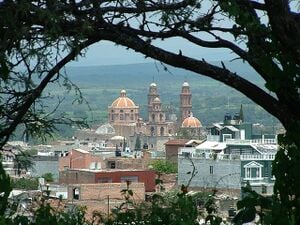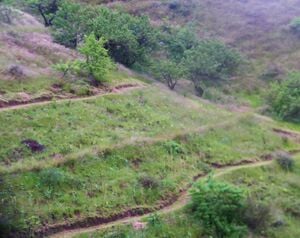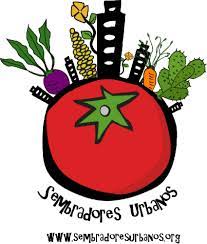Loading map...
{"format":"leaflet","minzoom":false,"maxzoom":false,"limit":99999,"offset":0,"link":"all","sort":[""],"order":[],"headers":"show","mainlabel":"","intro":"","outro":"","searchlabel":"\u003Cspan class=\"mw-ui-button\" style=\"margin: .5em 0;\"\u003EMore results\u003C/span\u003E","default":"","import-annotation":false,"width":"auto","height":"350px","centre":false,"title":"","label":"","icon":"","lines":[],"polygons":[],"circles":[],"rectangles":[],"copycoords":false,"static":false,"zoom":false,"defzoom":14,"layers":["OpenStreetMap"],"image layers":[],"overlays":[],"resizable":false,"fullscreen":false,"scrollwheelzoom":true,"cluster":true,"clustermaxzoom":20,"clusterzoomonclick":true,"clustermaxradius":80,"clusterspiderfy":true,"geojson":"","clicktarget":"","showtitle":true,"hidenamespace":true,"template":"","userparam":"","activeicon":"","pagelabel":false,"ajaxcoordproperty":"","ajaxquery":"","locations":[{"text":"\u003Cb\u003E\u003Ca href=\"/Anisa_Foundation_parabolic_solar_hot_water_heater\" title=\"Anisa Foundation parabolic solar hot water heater\"\u003EAnisa Foundation parabolic solar hot water heater\u003C/a\u003E\u003C/b\u003E","title":"Anisa Foundation parabolic solar hot water heater","link":"","lat":32.640524999999996680344338528811931610107421875,"lon":-115.4749000000000052068571676500141620635986328125,"icon":""},{"text":"\u003Cb\u003E\u003Ca href=\"/Arroyo_Norte_sustainable_market_materials\" title=\"Arroyo Norte sustainable market materials\"\u003EArroyo Norte sustainable market materials\u003C/a\u003E\u003C/b\u003E","title":"Arroyo Norte sustainable market materials","link":"","lat":18.480197222221999453495300258509814739227294921875,"lon":-69.9421111111110036517857224680483341217041015625,"icon":""},{"text":"\u003Cb\u003E\u003Ca href=\"/Arroyo_Norte_waste_plastic_innovation\" title=\"Arroyo Norte waste plastic innovation\"\u003EArroyo Norte waste plastic innovation\u003C/a\u003E\u003C/b\u003E","title":"Arroyo Norte waste plastic innovation","link":"","lat":18.480197222221999453495300258509814739227294921875,"lon":-69.9421111111110036517857224680483341217041015625,"icon":""},{"text":"\u003Cb\u003E\u003Ca href=\"/Bamboo_demonstration_motor\" title=\"Bamboo demonstration motor\"\u003EBamboo demonstration motor\u003C/a\u003E\u003C/b\u003E","title":"Bamboo demonstration motor","link":"","lat":25.591947222222000135616326588205993175506591796875,"lon":-102.3839722222199952739174477756023406982421875,"icon":""},{"text":"\u003Cb\u003E\u003Ca href=\"/Biodigester_Effluent_Fertilizer_Quality_Testing_with_IRRI\" title=\"Biodigester Effluent Fertilizer Quality Testing with IRRI\"\u003EBiodigester Effluent Fertilizer Quality Testing with IRRI\u003C/a\u003E\u003C/b\u003E","title":"Biodigester Effluent Fertilizer Quality Testing with IRRI","link":"","lat":19.432630555555999052330662379972636699676513671875,"lon":-99.133177777778001882325042970478534698486328125,"icon":""},{"text":"\u003Cb\u003E\u003Ca href=\"/Biodigester_Effluent_Testing_with_IRRI\" title=\"Biodigester Effluent Testing with IRRI\"\u003EBiodigester Effluent Testing with IRRI\u003C/a\u003E\u003C/b\u003E","title":"Biodigester Effluent Testing with IRRI","link":"","lat":19.432630555555999052330662379972636699676513671875,"lon":-99.133177777778001882325042970478534698486328125,"icon":""},{"text":"\u003Cb\u003E\u003Ca href=\"/Biodigester_Effluent_Water_Quality_Testing_with_IRRI\" title=\"Biodigester Effluent Water Quality Testing with IRRI\"\u003EBiodigester Effluent Water Quality Testing with IRRI\u003C/a\u003E\u003C/b\u003E","title":"Biodigester Effluent Water Quality Testing with IRRI","link":"","lat":19.432630555555999052330662379972636699676513671875,"lon":-99.133177777778001882325042970478534698486328125,"icon":""},{"text":"\u003Cb\u003E\u003Ca href=\"/Biodigester_effluent_fertilizer_quality_(IRRI)\" title=\"Biodigester effluent fertilizer quality (IRRI)\"\u003EBiodigester effluent fertilizer quality (IRRI)\u003C/a\u003E\u003C/b\u003E","title":"Biodigester effluent fertilizer quality (IRRI)","link":"","lat":19.432630555555999052330662379972636699676513671875,"lon":-99.133177777778001882325042970478534698486328125,"icon":""},{"text":"\u003Cb\u003E\u003Ca href=\"/Cafe_Para_La_Vida_Digna_(CPLVD)\" title=\"Cafe Para La Vida Digna (CPLVD)\"\u003ECafe Para La Vida Digna (CPLVD)\u003C/a\u003E\u003C/b\u003E","title":"Cafe Para La Vida Digna (CPLVD)","link":"","lat":16.5,"lon":-92.5,"icon":""},{"text":"\u003Cb\u003E\u003Ca href=\"/Ceiling_insulation_out_of_recycled_Tetra_pack_at_Pedregal\" title=\"Ceiling insulation out of recycled Tetra pack at Pedregal\"\u003ECeiling insulation out of recycled Tetra pack at Pedregal\u003C/a\u003E\u003C/b\u003E","title":"Ceiling insulation out of recycled Tetra pack at Pedregal","link":"","lat":17,"lon":-96.5,"icon":""},{"text":"\u003Cb\u003E\u003Ca href=\"/DIF_Adobe_Senior_Center\" title=\"DIF Adobe Senior Center\"\u003EDIF Adobe Senior Center\u003C/a\u003E\u003C/b\u003E","title":"DIF Adobe Senior Center","link":"","lat":25.591947222222000135616326588205993175506591796875,"lon":-102.3839722222199952739174477756023406982421875,"icon":""},{"text":"\u003Cb\u003E\u003Ca href=\"/DIF_Adobe_Senior_Center_2007\" title=\"DIF Adobe Senior Center 2007\"\u003EDIF Adobe Senior Center 2007\u003C/a\u003E\u003C/b\u003E","title":"DIF Adobe Senior Center 2007","link":"","lat":25.591947222222000135616326588205993175506591796875,"lon":-102.3839722222199952739174477756023406982421875,"icon":""},{"text":"\u003Cb\u003E\u003Ca href=\"/Daycare_rainwater_catchment_system\" title=\"Daycare rainwater catchment system\"\u003EDaycare rainwater catchment system\u003C/a\u003E\u003C/b\u003E","title":"Daycare rainwater catchment system","link":"","lat":25.4383499999999997953636921010911464691162109375,"lon":-102.164055555559997401360305957496166229248046875,"icon":""},{"text":"\u003Cb\u003E\u003Ca href=\"/Demostraci%C3%B3n_UABJO_Humedales_Tratamiento_de_Aguas_Residuales,_Recuperaci%C3%B3n_y_Difusi%C3%B3n\" title=\"Demostraci\u00f3n UABJO Humedales Tratamiento de Aguas Residuales, Recuperaci\u00f3n y Difusi\u00f3n\"\u003EDemostraci\u00f3n UABJO Humedales Tratamiento de Aguas Residuales, Recuperaci\u00f3n y Difusi\u00f3n\u003C/a\u003E\u003C/b\u003E","title":"Demostraci\u00f3n UABJO Humedales Tratamiento de Aguas Residuales, Recuperaci\u00f3n y Difusi\u00f3n","link":"","lat":17,"lon":-96.5,"icon":""},{"text":"\u003Cb\u003E\u003Ca href=\"/Ecological_dry_toilets_at_Pedregal\" title=\"Ecological dry toilets at Pedregal\"\u003EEcological dry toilets at Pedregal\u003C/a\u003E\u003C/b\u003E","title":"Ecological dry toilets at Pedregal","link":"","lat":17,"lon":-96.5,"icon":""},{"text":"\u003Cb\u003E\u003Ca href=\"/Ecological_restoration_Mexico\" title=\"Ecological restoration Mexico\"\u003EEcological restoration Mexico\u003C/a\u003E\u003C/b\u003E","title":"Ecological restoration Mexico","link":"","lat":23.658511111111000246864932705648243427276611328125,"lon":-102.0077083333300009826416498981416225433349609375,"icon":""},{"text":"\u003Cb\u003E\u003Ca href=\"/El_Jard%C3%ADn_M%C3%A1gico_de_las_Ni%C3%B1as\" title=\"El Jard\u00edn M\u00e1gico de las Ni\u00f1as\"\u003EEl Jard\u00edn M\u00e1gico de las Ni\u00f1as\u003C/a\u003E\u003C/b\u003E","title":"El Jard\u00edn M\u00e1gico de las Ni\u00f1as","link":"","lat":25.591947222222000135616326588205993175506591796875,"lon":-102.3839722222199952739174477756023406982421875,"icon":""},{"text":"\u003Cb\u003E\u003Ca href=\"/El_Limon_Microhydro\" title=\"El Limon Microhydro\"\u003EEl Limon Microhydro\u003C/a\u003E\u003C/b\u003E","title":"El Limon Microhydro","link":"","lat":18.610716666666998975188107579015195369720458984375,"lon":-70.4979249999999950659912428818643093109130859375,"icon":""},{"text":"\u003Cb\u003E\u003Ca href=\"/El_Nuevo_Sol_Learning_Garden\" title=\"El Nuevo Sol Learning Garden\"\u003EEl Nuevo Sol Learning Garden\u003C/a\u003E\u003C/b\u003E","title":"El Nuevo Sol Learning Garden","link":"","lat":25.591947222222000135616326588205993175506591796875,"lon":-102.3839722222199952739174477756023406982421875,"icon":""},{"text":"\u003Cb\u003E\u003Ca href=\"/Foro_Para_el_Desarollo_Sostentable_Stove_Dissemination_Program\" title=\"Foro Para el Desarollo Sostentable Stove Dissemination Program\"\u003EForo Para el Desarollo Sostentable Stove Dissemination Program\u003C/a\u003E\u003C/b\u003E","title":"Foro Para el Desarollo Sostentable Stove Dissemination Program","link":"","lat":16.5,"lon":-92.5,"icon":""},{"text":"\u003Cb\u003E\u003Ca href=\"/User:Gcf5\" title=\"User:Gcf5\"\u003EGcf5\u003C/a\u003E\u003C/b\u003E","title":"Gcf5","link":"","lat":25.591947222222000135616326588205993175506591796875,"lon":-102.3839722222199952739174477756023406982421875,"icon":""},{"text":"\u003Cb\u003E\u003Ca href=\"/User:Gge2\" title=\"User:Gge2\"\u003EGge2\u003C/a\u003E\u003C/b\u003E","title":"Gge2","link":"","lat":16.683547222221999817293180967681109905242919921875,"lon":-92.615519444444004193428554572165012359619140625,"icon":""},{"text":"\u003Cb\u003E\u003Ca href=\"/Ghetto2Garden_solar_power\" title=\"Ghetto2Garden solar power\"\u003EGhetto2Garden solar power\u003C/a\u003E\u003C/b\u003E","title":"Ghetto2Garden solar power","link":"","lat":18.469058333332998955711445887573063373565673828125,"lon":-69.9277694444439958942894008941948413848876953125,"icon":""},{"text":"\u003Cb\u003E\u003Ca href=\"/Heat_distribution_test\" title=\"Heat distribution test\"\u003EHeat distribution test\u003C/a\u003E\u003C/b\u003E","title":"Heat distribution test","link":"","lat":19.51368055555600022898943279869854450225830078125,"lon":-101.6099583333299989362785709090530872344970703125,"icon":""},{"text":"\u003Cb\u003E\u003Ca href=\"/Hotel_Perote_solar_pool_heating_system\" title=\"Hotel Perote solar pool heating system\"\u003EHotel Perote solar pool heating system\u003C/a\u003E\u003C/b\u003E","title":"Hotel Perote solar pool heating system","link":"","lat":25.591947222222000135616326588205993175506591796875,"lon":-102.3839722222199952739174477756023406982421875,"icon":""},{"text":"\u003Cb\u003E\u003Ca href=\"/Hydroponic_vertical_garden_at_Sembradores_Urbanos\" title=\"Hydroponic vertical garden at Sembradores Urbanos\"\u003EHydroponic vertical garden at Sembradores Urbanos\u003C/a\u003E\u003C/b\u003E","title":"Hydroponic vertical garden at Sembradores Urbanos","link":"","lat":19.432630555555999052330662379972636699676513671875,"lon":-99.133177777778001882325042970478534698486328125,"icon":""},{"text":"\u003Cb\u003E\u003Ca href=\"/Institute_of_Nature_and_Society_of_Oaxaca\" title=\"Institute of Nature and Society of Oaxaca\"\u003EInstitute of Nature and Society of Oaxaca\u003C/a\u003E\u003C/b\u003E","title":"Institute of Nature and Society of Oaxaca","link":"","lat":17,"lon":-96.5,"icon":""},{"text":"\u003Cb\u003E\u003Ca href=\"/International_Renewable_Resources_Institute-Mexico\" title=\"International Renewable Resources Institute-Mexico\"\u003EInternational Renewable Resources Institute-Mexico\u003C/a\u003E\u003C/b\u003E","title":"International Renewable Resources Institute-Mexico","link":"","lat":19.432630555555999052330662379972636699676513671875,"lon":-99.133177777778001882325042970478534698486328125,"icon":""},{"text":"\u003Cb\u003E\u003Ca href=\"/Isla_Urbana\" title=\"Isla Urbana\"\u003EIsla Urbana\u003C/a\u003E\u003C/b\u003E","title":"Isla Urbana","link":"","lat":19.432630555555999052330662379972636699676513671875,"lon":-99.133177777778001882325042970478534698486328125,"icon":""},{"text":"\u003Cb\u003E\u003Ca href=\"/User:Jessica_lotak\" title=\"User:Jessica lotak\"\u003EJessica lotak\u003C/a\u003E\u003C/b\u003E","title":"Jessica lotak","link":"","lat":40.86651666666700322139149648137390613555908203125,"lon":-124.082838888889995132558397017419338226318359375,"icon":""},{"text":"\u003Cb\u003E\u003Ca href=\"/User:Jessica_lotak\" title=\"User:Jessica lotak\"\u003EJessica lotak\u003C/a\u003E\u003C/b\u003E","title":"Jessica lotak","link":"","lat":25.591947222222000135616326588205993175506591796875,"lon":-102.3839722222199952739174477756023406982421875,"icon":""},{"text":"\u003Cb\u003E\u003Ca href=\"/User:Jessica_lotak\" title=\"User:Jessica lotak\"\u003EJessica lotak\u003C/a\u003E\u003C/b\u003E","title":"Jessica lotak","link":"","lat":-24.7761083333329992228755145333707332611083984375,"lon":134.7549999999999954525264911353588104248046875,"icon":""},{"text":"\u003Cb\u003E\u003Ca href=\"/User:Jessica_lotak\" title=\"User:Jessica lotak\"\u003EJessica lotak\u003C/a\u003E\u003C/b\u003E","title":"Jessica lotak","link":"","lat":-34.99649722222199699217526358552277088165283203125,"lon":-64.9672805555560017864991095848381519317626953125,"icon":""},{"text":"\u003Cb\u003E\u003Ca href=\"/La_Yuca_ecoladrillo_schoolroom_2011\" title=\"La Yuca ecoladrillo schoolroom 2011\"\u003ELa Yuca ecoladrillo schoolroom 2011\u003C/a\u003E\u003C/b\u003E","title":"La Yuca ecoladrillo schoolroom 2011","link":"","lat":19.064911111111001673634746111929416656494140625,"lon":-70.151600000000001955413608811795711517333984375,"icon":""},{"text":"\u003Cb\u003E\u003Ca href=\"/La_Yuca_rainwater_catchment_2011\" title=\"La Yuca rainwater catchment 2011\"\u003ELa Yuca rainwater catchment 2011\u003C/a\u003E\u003C/b\u003E","title":"La Yuca rainwater catchment 2011","link":"","lat":18.480197222221999453495300258509814739227294921875,"lon":-69.9421111111110036517857224680483341217041015625,"icon":""},{"text":"\u003Cb\u003E\u003Ca href=\"/La_Yuca_rainwater_catchment_2012\" title=\"La Yuca rainwater catchment 2012\"\u003ELa Yuca rainwater catchment 2012\u003C/a\u003E\u003C/b\u003E","title":"La Yuca rainwater catchment 2012","link":"","lat":18.480197222221999453495300258509814739227294921875,"lon":-69.9421111111110036517857224680483341217041015625,"icon":""},{"text":"\u003Cb\u003E\u003Ca href=\"/La_Yuca_rainwater_catchment_2013\" title=\"La Yuca rainwater catchment 2013\"\u003ELa Yuca rainwater catchment 2013\u003C/a\u003E\u003C/b\u003E","title":"La Yuca rainwater catchment 2013","link":"","lat":18.480197222221999453495300258509814739227294921875,"lon":-69.9421111111110036517857224680483341217041015625,"icon":""},{"text":"\u003Cb\u003E\u003Ca href=\"/La_Yuca_rainwater_catchment_2014\" title=\"La Yuca rainwater catchment 2014\"\u003ELa Yuca rainwater catchment 2014\u003C/a\u003E\u003C/b\u003E","title":"La Yuca rainwater catchment 2014","link":"","lat":18.480197222221999453495300258509814739227294921875,"lon":-69.9421111111110036517857224680483341217041015625,"icon":""},{"text":"\u003Cb\u003E\u003Ca href=\"/La_Yuca_schoolroom_renovation\" title=\"La Yuca schoolroom renovation\"\u003ELa Yuca schoolroom renovation\u003C/a\u003E\u003C/b\u003E","title":"La Yuca schoolroom renovation","link":"","lat":18.469058333332998955711445887573063373565673828125,"lon":-69.9277694444439958942894008941948413848876953125,"icon":""},{"text":"\u003Cb\u003E\u003Ca href=\"/La_Yuca_small_scale_renewable_energy_2011\" title=\"La Yuca small scale renewable energy 2011\"\u003ELa Yuca small scale renewable energy 2011\u003C/a\u003E\u003C/b\u003E","title":"La Yuca small scale renewable energy 2011","link":"","lat":18.480197222221999453495300258509814739227294921875,"lon":-69.9421111111110036517857224680483341217041015625,"icon":""},{"text":"\u003Cb\u003E\u003Ca href=\"/Las_Malvinas_Botica_Popular_2015\" title=\"Las Malvinas Botica Popular 2015\"\u003ELas Malvinas Botica Popular 2015\u003C/a\u003E\u003C/b\u003E","title":"Las Malvinas Botica Popular 2015","link":"","lat":18.4554055555559983758939779363572597503662109375,"lon":-69.978616666666994206025265157222747802734375,"icon":""},{"text":"\u003Cb\u003E\u003Ca href=\"/Las_Malvinas_Botica_Popular_2015_(Espa%C3%B1ol)\" title=\"Las Malvinas Botica Popular 2015 (Espa\u00f1ol)\"\u003ELas Malvinas Botica Popular 2015 (Espa\u00f1ol)\u003C/a\u003E\u003C/b\u003E","title":"Las Malvinas Botica Popular 2015 (Espa\u00f1ol)","link":"","lat":18.449124999999998664179656771011650562286376953125,"lon":-69.979336111110995943818124942481517791748046875,"icon":""},{"text":"\u003Cb\u003E\u003Ca href=\"/Las_Malvinas_botica_popular_ecoladrillo_2013\" title=\"Las Malvinas botica popular ecoladrillo 2013\"\u003ELas Malvinas botica popular ecoladrillo 2013\u003C/a\u003E\u003C/b\u003E","title":"Las Malvinas botica popular ecoladrillo 2013","link":"","lat":18.4554055555559983758939779363572597503662109375,"lon":-69.978616666666994206025265157222747802734375,"icon":""},{"text":"\u003Cb\u003E\u003Ca href=\"/Las_Malvinas_botica_popular_hullkrete_2013\" title=\"Las Malvinas botica popular hullkrete 2013\"\u003ELas Malvinas botica popular hullkrete 2013\u003C/a\u003E\u003C/b\u003E","title":"Las Malvinas botica popular hullkrete 2013","link":"","lat":18.449124999999998664179656771011650562286376953125,"lon":-69.979336111110995943818124942481517791748046875,"icon":""},{"text":"\u003Cb\u003E\u003Ca href=\"/Las_Malvinas_ecoladrillo_schoolroom\" title=\"Las Malvinas ecoladrillo schoolroom\"\u003ELas Malvinas ecoladrillo schoolroom\u003C/a\u003E\u003C/b\u003E","title":"Las Malvinas ecoladrillo schoolroom","link":"","lat":18.449124999999998664179656771011650562286376953125,"lon":-69.979336111110995943818124942481517791748046875,"icon":""},{"text":"\u003Cb\u003E\u003Ca href=\"/Las_Malvinas_rainwater_catchment_system_2013\" title=\"Las Malvinas rainwater catchment system 2013\"\u003ELas Malvinas rainwater catchment system 2013\u003C/a\u003E\u003C/b\u003E","title":"Las Malvinas rainwater catchment system 2013","link":"","lat":18.4554055555559983758939779363572597503662109375,"lon":-69.978616666666994206025265157222747802734375,"icon":""},{"text":"\u003Cb\u003E\u003Ca href=\"/Las_Malvinas_rainwater_catchment_system_2014\" title=\"Las Malvinas rainwater catchment system 2014\"\u003ELas Malvinas rainwater catchment system 2014\u003C/a\u003E\u003C/b\u003E","title":"Las Malvinas rainwater catchment system 2014","link":"","lat":18.449124999999998664179656771011650562286376953125,"lon":-69.979336111110995943818124942481517791748046875,"icon":""},{"text":"\u003Cb\u003E\u003Ca href=\"/Las_Malvinas_rainwater_feasibility_study_2014\" title=\"Las Malvinas rainwater feasibility study 2014\"\u003ELas Malvinas rainwater feasibility study 2014\u003C/a\u003E\u003C/b\u003E","title":"Las Malvinas rainwater feasibility study 2014","link":"","lat":18.449124999999998664179656771011650562286376953125,"lon":-69.979336111110995943818124942481517791748046875,"icon":""},{"text":"\u003Cb\u003E\u003Ca href=\"/Merkaba_Trueke_Barter_Exchange_at_Semillero_Romita\" title=\"Merkaba Trueke Barter Exchange at Semillero Romita\"\u003EMerkaba Trueke Barter Exchange at Semillero Romita\u003C/a\u003E\u003C/b\u003E","title":"Merkaba Trueke Barter Exchange at Semillero Romita","link":"","lat":19.3469611111109998091706074774265289306640625,"lon":-98.9974388888889933468817616812884807586669921875,"icon":""},{"text":"\u003Cb\u003E\u003Ca href=\"/Mexico_City\" title=\"Mexico City\"\u003EMexico City\u003C/a\u003E\u003C/b\u003E","title":"Mexico City","link":"","lat":23.658511111111000246864932705648243427276611328125,"lon":-102.0077083333300009826416498981416225433349609375,"icon":""},{"text":"\u003Cb\u003E\u003Ca href=\"/Mexico_community_action\" title=\"Mexico community action\"\u003EMexico community action\u003C/a\u003E\u003C/b\u003E","title":"Mexico community action","link":"","lat":23.658511111111000246864932705648243427276611328125,"lon":-102.0077083333300009826416498981416225433349609375,"icon":""},{"text":"\u003Cb\u003E\u003Ca href=\"/Mexico_community_activism_news\" title=\"Mexico community activism news\"\u003EMexico community activism news\u003C/a\u003E\u003C/b\u003E","title":"Mexico community activism news","link":"","lat":23.658511111111000246864932705648243427276611328125,"lon":-102.0077083333300009826416498981416225433349609375,"icon":""},{"text":"\u003Cb\u003E\u003Ca href=\"/Michoacan\" title=\"Michoacan\"\u003EMichoacan\u003C/a\u003E\u003C/b\u003E","title":"Michoacan","link":"","lat":19.207097222221999999192121322266757488250732421875,"lon":-101.878113888889998861486674286425113677978515625,"icon":""},{"text":"\u003Cb\u003E\u003Ca href=\"/Micro_filter_dams_at_Pedregal\" title=\"Micro filter dams at Pedregal\"\u003EMicro filter dams at Pedregal\u003C/a\u003E\u003C/b\u003E","title":"Micro filter dams at Pedregal","link":"","lat":17.10250555555600016077733016572892665863037109375,"lon":-96.66608333333300606682314537465572357177734375,"icon":""},{"text":"\u003Cb\u003E\u003Ca href=\"/Modified_Justa_Stove\" title=\"Modified Justa Stove\"\u003EModified Justa Stove\u003C/a\u003E\u003C/b\u003E","title":"Modified Justa Stove","link":"","lat":16.5,"lon":-92.5,"icon":""},{"text":"\u003Cb\u003E\u003Ca href=\"/Natural_Wastewater_Treatment_and_Outreach,_Tlacolula,_Oaxaca\" title=\"Natural Wastewater Treatment and Outreach, Tlacolula, Oaxaca\"\u003ENatural Wastewater Treatment and Outreach, Tlacolula, Oaxaca\u003C/a\u003E\u003C/b\u003E","title":"Natural Wastewater Treatment and Outreach, Tlacolula, Oaxaca","link":"","lat":16.93146111111099827439829823561012744903564453125,"lon":-96.4611083333330014966122689656913280487060546875,"icon":""},{"text":"\u003Cb\u003E\u003Ca href=\"/Oaxaca\" title=\"Oaxaca\"\u003EOaxaca\u003C/a\u003E\u003C/b\u003E","title":"Oaxaca","link":"","lat":17,"lon":-96.5,"icon":""},{"text":"\u003Cb\u003E\u003Ca href=\"/Oaxaca_Water_Quality_Forum\" title=\"Oaxaca Water Quality Forum\"\u003EOaxaca Water Quality Forum\u003C/a\u003E\u003C/b\u003E","title":"Oaxaca Water Quality Forum","link":"","lat":17,"lon":-96.5,"icon":""},{"text":"\u003Cb\u003E\u003Ca href=\"/Otros_Mundos_Chiapas_Stove_Dissemination_Program\" title=\"Otros Mundos Chiapas Stove Dissemination Program\"\u003EOtros Mundos Chiapas Stove Dissemination Program\u003C/a\u003E\u003C/b\u003E","title":"Otros Mundos Chiapas Stove Dissemination Program","link":"","lat":16.5,"lon":-92.5,"icon":""},{"text":"\u003Cb\u003E\u003Ca href=\"/Pallet_home\" title=\"Pallet home\"\u003EPallet home\u003C/a\u003E\u003C/b\u003E","title":"Pallet home","link":"","lat":31.77523888888899961102652014233171939849853515625,"lon":-106.56045000000000300133251585066318511962890625,"icon":""},{"text":"\u003Cb\u003E\u003Ca href=\"/Parameters_for_rainwater_quality_testing_at_Isla_Urbana_and_the_Ajusco_Lab\" title=\"Parameters for rainwater quality testing at Isla Urbana and the Ajusco Lab\"\u003EParameters for rainwater quality testing at Isla Urbana and the Ajusco Lab\u003C/a\u003E\u003C/b\u003E","title":"Parameters for rainwater quality testing at Isla Urbana and the Ajusco Lab","link":"","lat":19.432630555555999052330662379972636699676513671875,"lon":-99.133177777778001882325042970478534698486328125,"icon":""},{"text":"\u003Cb\u003E\u003Ca href=\"/Parras_Handbook\" title=\"Parras Handbook\"\u003EParras Handbook\u003C/a\u003E\u003C/b\u003E","title":"Parras Handbook","link":"","lat":25.591947222222000135616326588205993175506591796875,"lon":-102.3839722222199952739174477756023406982421875,"icon":""},{"text":"\u003Cb\u003E\u003Ca href=\"/Parras_Straw_Sources\" title=\"Parras Straw Sources\"\u003EParras Straw Sources\u003C/a\u003E\u003C/b\u003E","title":"Parras Straw Sources","link":"","lat":25.591947222222000135616326588205993175506591796875,"lon":-102.3839722222199952739174477756023406982421875,"icon":""},{"text":"\u003Cb\u003E\u003Ca href=\"/Parras_earthen_construction_gallery\" title=\"Parras earthen construction gallery\"\u003EParras earthen construction gallery\u003C/a\u003E\u003C/b\u003E","title":"Parras earthen construction gallery","link":"","lat":25.591947222222000135616326588205993175506591796875,"lon":-102.3839722222199952739174477756023406982421875,"icon":""},{"text":"\u003Cb\u003E\u003Ca href=\"/Parras_natural_paint_gallery\" title=\"Parras natural paint gallery\"\u003EParras natural paint gallery\u003C/a\u003E\u003C/b\u003E","title":"Parras natural paint gallery","link":"","lat":25.591947222222000135616326588205993175506591796875,"lon":-102.3839722222199952739174477756023406982421875,"icon":""},{"text":"\u003Cb\u003E\u003Ca href=\"/Parras_wind_power_gallery\" title=\"Parras wind power gallery\"\u003EParras wind power gallery\u003C/a\u003E\u003C/b\u003E","title":"Parras wind power gallery","link":"","lat":25.591947222222000135616326588205993175506591796875,"lon":-102.3839722222199952739174477756023406982421875,"icon":""},{"text":"\u003Cb\u003E\u003Ca href=\"/Patsari_Cookstove\" title=\"Patsari Cookstove\"\u003EPatsari Cookstove\u003C/a\u003E\u003C/b\u003E","title":"Patsari Cookstove","link":"","lat":19.51368055555600022898943279869854450225830078125,"lon":-101.6099583333299989362785709090530872344970703125,"icon":""},{"text":"\u003Cb\u003E\u003Ca href=\"/Permaculture_Demonstration_Center_in_San_Andres_Huayapam\" title=\"Permaculture Demonstration Center in San Andres Huayapam\"\u003EPermaculture Demonstration Center in San Andres Huayapam\u003C/a\u003E\u003C/b\u003E","title":"Permaculture Demonstration Center in San Andres Huayapam","link":"","lat":17.10250555555600016077733016572892665863037109375,"lon":-96.66608333333300606682314537465572357177734375,"icon":""},{"text":"\u003Cb\u003E\u003Ca href=\"/Polyculture_Planting_at_Sembradores_Urbanos\" title=\"Polyculture Planting at Sembradores Urbanos\"\u003EPolyculture Planting at Sembradores Urbanos\u003C/a\u003E\u003C/b\u003E","title":"Polyculture Planting at Sembradores Urbanos","link":"","lat":19.432630555555999052330662379972636699676513671875,"lon":-99.133177777778001882325042970478534698486328125,"icon":""},{"text":"\u003Cb\u003E\u003Ca href=\"/Practivistas_Chiapas_biodigester\" title=\"Practivistas Chiapas biodigester\"\u003EPractivistas Chiapas biodigester\u003C/a\u003E\u003C/b\u003E","title":"Practivistas Chiapas biodigester","link":"","lat":16.5,"lon":-92.5,"icon":""},{"text":"\u003Cb\u003E\u003Ca href=\"/Practivistas_Chiapas_estufas_ahorradoras\" title=\"Practivistas Chiapas estufas ahorradoras\"\u003EPractivistas Chiapas estufas ahorradoras\u003C/a\u003E\u003C/b\u003E","title":"Practivistas Chiapas estufas ahorradoras","link":"","lat":16.5,"lon":-92.5,"icon":""},{"text":"\u003Cb\u003E\u003Ca href=\"/Practivistas_Chiapas_improved_cookstoves\" title=\"Practivistas Chiapas improved cookstoves\"\u003EPractivistas Chiapas improved cookstoves\u003C/a\u003E\u003C/b\u003E","title":"Practivistas Chiapas improved cookstoves","link":"","lat":16.5,"lon":-92.5,"icon":""},{"text":"\u003Cb\u003E\u003Ca href=\"/Practivistas_Chiapas_rainwater_catchment\" title=\"Practivistas Chiapas rainwater catchment\"\u003EPractivistas Chiapas rainwater catchment\u003C/a\u003E\u003C/b\u003E","title":"Practivistas Chiapas rainwater catchment","link":"","lat":16.5,"lon":-92.5,"icon":""},{"text":"\u003Cb\u003E\u003Ca href=\"/Practivistas_Chiapas_windbelt_ASE\" title=\"Practivistas Chiapas windbelt ASE\"\u003EPractivistas Chiapas windbelt ASE\u003C/a\u003E\u003C/b\u003E","title":"Practivistas Chiapas windbelt ASE","link":"","lat":16.5,"lon":-92.5,"icon":""},{"text":"\u003Cb\u003E\u003Ca href=\"/Practivistas_Chiapas_windbelt_espa%C3%B1ol\" title=\"Practivistas Chiapas windbelt espa\u00f1ol\"\u003EPractivistas Chiapas windbelt espa\u00f1ol\u003C/a\u003E\u003C/b\u003E","title":"Practivistas Chiapas windbelt espa\u00f1ol","link":"","lat":16.5,"lon":-92.5,"icon":""},{"text":"\u003Cb\u003E\u003Ca href=\"/Practivistas_solar_2015\" title=\"Practivistas solar 2015\"\u003EPractivistas solar 2015\u003C/a\u003E\u003C/b\u003E","title":"Practivistas solar 2015","link":"","lat":18.480197222221999453495300258509814739227294921875,"lon":-69.9421111111110036517857224680483341217041015625,"icon":""},{"text":"\u003Cb\u003E\u003Ca href=\"/Process_for_testing_biodigester_effluent_fertilizer_quality_in_lab_with_IRRI\" title=\"Process for testing biodigester effluent fertilizer quality in lab with IRRI\"\u003EProcess for testing biodigester effluent fertilizer quality in lab with IRRI\u003C/a\u003E\u003C/b\u003E","title":"Process for testing biodigester effluent fertilizer quality in lab with IRRI","link":"","lat":19.432630555555999052330662379972636699676513671875,"lon":-99.133177777778001882325042970478534698486328125,"icon":""},{"text":"\u003Cb\u003E\u003Ca href=\"/Pronatura_Chiapas_Stove_Dissemination_Program\" title=\"Pronatura Chiapas Stove Dissemination Program\"\u003EPronatura Chiapas Stove Dissemination Program\u003C/a\u003E\u003C/b\u003E","title":"Pronatura Chiapas Stove Dissemination Program","link":"","lat":16.683547222221999817293180967681109905242919921875,"lon":-92.615519444444004193428554572165012359619140625,"icon":""},{"text":"\u003Cb\u003E\u003Ca href=\"/Rainwater_Quality_Testing_Procedures_at_Isla_Urbana_and_Ajusco_Labs\" title=\"Rainwater Quality Testing Procedures at Isla Urbana and Ajusco Labs\"\u003ERainwater Quality Testing Procedures at Isla Urbana and Ajusco Labs\u003C/a\u003E\u003C/b\u003E","title":"Rainwater Quality Testing Procedures at Isla Urbana and Ajusco Labs","link":"","lat":19.432630555555999052330662379972636699676513671875,"lon":-99.133177777778001882325042970478534698486328125,"icon":""},{"text":"\u003Cb\u003E\u003Ca href=\"/Rainwater_catchment_at_Pedregal\" title=\"Rainwater catchment at Pedregal\"\u003ERainwater catchment at Pedregal\u003C/a\u003E\u003C/b\u003E","title":"Rainwater catchment at Pedregal","link":"","lat":17,"lon":-96.5,"icon":""},{"text":"\u003Cb\u003E\u003Ca href=\"/Rainwater_harvesting_system_and_component_water_quality_analysis_in_the_field_with_Isla_Urbana\" title=\"Rainwater harvesting system and component water quality analysis in the field with Isla Urbana\"\u003ERainwater harvesting system and component water quality analysis in the field with Isla Urbana\u003C/a\u003E\u003C/b\u003E","title":"Rainwater harvesting system and component water quality analysis in the field with Isla Urbana","link":"","lat":19.432630555555999052330662379972636699676513671875,"lon":-99.133177777778001882325042970478534698486328125,"icon":""},{"text":"\u003Cb\u003E\u003Ca href=\"/Rainwater_quality_testing_with_Isla_Urbana\" title=\"Rainwater quality testing with Isla Urbana\"\u003ERainwater quality testing with Isla Urbana\u003C/a\u003E\u003C/b\u003E","title":"Rainwater quality testing with Isla Urbana","link":"","lat":19.432630555555999052330662379972636699676513671875,"lon":-99.133177777778001882325042970478534698486328125,"icon":""},{"text":"\u003Cb\u003E\u003Ca href=\"/Raised_Beds_at_Sembradores_Urbanos\" title=\"Raised Beds at Sembradores Urbanos\"\u003ERaised Beds at Sembradores Urbanos\u003C/a\u003E\u003C/b\u003E","title":"Raised Beds at Sembradores Urbanos","link":"","lat":19.432630555555999052330662379972636699676513671875,"lon":-99.133177777778001882325042970478534698486328125,"icon":""},{"text":"\u003Cb\u003E\u003Ca href=\"/Reforestation_at_Pedregal\" title=\"Reforestation at Pedregal\"\u003EReforestation at Pedregal\u003C/a\u003E\u003C/b\u003E","title":"Reforestation at Pedregal","link":"","lat":17,"lon":-96.5,"icon":""},{"text":"\u003Cb\u003E\u003Ca href=\"/Sembradores_Urbanos\" title=\"Sembradores Urbanos\"\u003ESembradores Urbanos\u003C/a\u003E\u003C/b\u003E","title":"Sembradores Urbanos","link":"","lat":19.432630555555999052330662379972636699676513671875,"lon":-99.133177777778001882325042970478534698486328125,"icon":""},{"text":"\u003Cb\u003E\u003Ca href=\"/Terraces_and_ditches_at_Petegral\" title=\"Terraces and ditches at Petegral\"\u003ETerraces and ditches at Petegral\u003C/a\u003E\u003C/b\u003E","title":"Terraces and ditches at Petegral","link":"","lat":17,"lon":-96.5,"icon":""},{"text":"\u003Cb\u003E\u003Ca href=\"/Testing_potability_of_rainwater_after_boiling_at_Isla_Urbana_and_Ajusco_Labs\" title=\"Testing potability of rainwater after boiling at Isla Urbana and Ajusco Labs\"\u003ETesting potability of rainwater after boiling at Isla Urbana and Ajusco Labs\u003C/a\u003E\u003C/b\u003E","title":"Testing potability of rainwater after boiling at Isla Urbana and Ajusco Labs","link":"","lat":19.432630555555999052330662379972636699676513671875,"lon":-99.133177777778001882325042970478534698486328125,"icon":""},{"text":"\u003Cb\u003E\u003Ca href=\"/Testing_synthesized_components_of_rainwater_harvesting_systems_with_Isla_Urbana\" title=\"Testing synthesized components of rainwater harvesting systems with Isla Urbana\"\u003ETesting synthesized components of rainwater harvesting systems with Isla Urbana\u003C/a\u003E\u003C/b\u003E","title":"Testing synthesized components of rainwater harvesting systems with Isla Urbana","link":"","lat":19.432630555555999052330662379972636699676513671875,"lon":-99.133177777778001882325042970478534698486328125,"icon":""},{"text":"\u003Cb\u003E\u003Ca href=\"/Testing_water_quality,_surveying_water_access,_and_mapping_high_risk_areas_in_Mexico_City_with_Isla_Urbana\" title=\"Testing water quality, surveying water access, and mapping high risk areas in Mexico City with Isla Urbana\"\u003ETesting water quality, surveying water access, and mapping high risk areas in Mexico City with Isla Urbana\u003C/a\u003E\u003C/b\u003E","title":"Testing water quality, surveying water access, and mapping high risk areas in Mexico City with Isla Urbana","link":"","lat":19.432630555555999052330662379972636699676513671875,"lon":-99.133177777778001882325042970478534698486328125,"icon":""},{"text":"\u003Cb\u003E\u003Ca href=\"/Tienda_Hernandez_photovoltaic_feasibility_study\" title=\"Tienda Hernandez photovoltaic feasibility study\"\u003ETienda Hernandez photovoltaic feasibility study\u003C/a\u003E\u003C/b\u003E","title":"Tienda Hernandez photovoltaic feasibility study","link":"","lat":25.591947222222000135616326588205993175506591796875,"lon":-102.3839722222199952739174477756023406982421875,"icon":""},{"text":"\u003Cb\u003E\u003Ca href=\"/UABJO_Demonstration_Wetland_Wastewater_Treatment,_Reclamation,_and_Outreach\" title=\"UABJO Demonstration Wetland Wastewater Treatment, Reclamation, and Outreach\"\u003EUABJO Demonstration Wetland Wastewater Treatment, Reclamation, and Outreach\u003C/a\u003E\u003C/b\u003E","title":"UABJO Demonstration Wetland Wastewater Treatment, Reclamation, and Outreach","link":"","lat":17,"lon":-96.5,"icon":""},{"text":"\u003Cb\u003E\u003Ca href=\"/UTC_Solar_Absorption_Refrigeration\" title=\"UTC Solar Absorption Refrigeration\"\u003EUTC Solar Absorption Refrigeration\u003C/a\u003E\u003C/b\u003E","title":"UTC Solar Absorption Refrigeration","link":"","lat":25.591947222222000135616326588205993175506591796875,"lon":-102.3839722222199952739174477756023406982421875,"icon":""},{"text":"\u003Cb\u003E\u003Ca href=\"/UTC_Solar_Distiller\" title=\"UTC Solar Distiller\"\u003EUTC Solar Distiller\u003C/a\u003E\u003C/b\u003E","title":"UTC Solar Distiller","link":"","lat":19.432630555555999052330662379972636699676513671875,"lon":-99.133177777778001882325042970478534698486328125,"icon":""},{"text":"\u003Cb\u003E\u003Ca href=\"/UTC_solar_water_pasteurizer\" title=\"UTC solar water pasteurizer\"\u003EUTC solar water pasteurizer\u003C/a\u003E\u003C/b\u003E","title":"UTC solar water pasteurizer","link":"","lat":25.591947222222000135616326588205993175506591796875,"lon":-102.3839722222199952739174477756023406982421875,"icon":""},{"text":"\u003Cb\u003E\u003Ca href=\"/Urban_compost_bins_at_Sembradores_Urbanos\" title=\"Urban compost bins at Sembradores Urbanos\"\u003EUrban compost bins at Sembradores Urbanos\u003C/a\u003E\u003C/b\u003E","title":"Urban compost bins at Sembradores Urbanos","link":"","lat":19.432630555555999052330662379972636699676513671875,"lon":-99.133177777778001882325042970478534698486328125,"icon":""},{"text":"\u003Cb\u003E\u003Ca href=\"/User:Warsawr\" title=\"User:Warsawr\"\u003EWarsawr\u003C/a\u003E\u003C/b\u003E","title":"Warsawr","link":"","lat":25.591947222222000135616326588205993175506591796875,"lon":-102.3839722222199952739174477756023406982421875,"icon":""},{"text":"\u003Cb\u003E\u003Ca href=\"/User:Wilfredo\" title=\"User:Wilfredo\"\u003EWilfredo\u003C/a\u003E\u003C/b\u003E","title":"Wilfredo","link":"","lat":19.097402777778000881880871020257472991943359375,"lon":-70.302802777777998244346235878765583038330078125,"icon":""},{"text":"\u003Cb\u003E\u003Ca href=\"/Worm_bin_at_Sembradores_Urbanos\" title=\"Worm bin at Sembradores Urbanos\"\u003EWorm bin at Sembradores Urbanos\u003C/a\u003E\u003C/b\u003E","title":"Worm bin at Sembradores Urbanos","link":"","lat":19.432630555555999052330662379972636699676513671875,"lon":-99.133177777778001882325042970478534698486328125,"icon":""},{"text":"\u003Cb\u003E\u003Ca href=\"/Zaragoza_Solar_Hot_Water_System\" title=\"Zaragoza Solar Hot Water System\"\u003EZaragoza Solar Hot Water System\u003C/a\u003E\u003C/b\u003E","title":"Zaragoza Solar Hot Water System","link":"","lat":27.333333333333001746723311953246593475341796875,"lon":-102,"icon":""}],"imageLayers":[]}

 Public luxury for the everyday citizens of Mexico City—with “100 Utopias” being built by new Mayor Clara Brugada, Daily Alternative (Jul 06, 2024) — "brilliant example of collective amenity and a public infrastructure of care", David Madden
Public luxury for the everyday citizens of Mexico City—with “100 Utopias” being built by new Mayor Clara Brugada, Daily Alternative (Jul 06, 2024) — "brilliant example of collective amenity and a public infrastructure of care", David Madden Fewer wildfires, great biodiversity: what is the secret to the success of Mexico’s forests?, theguardian.com (May 01, 2024) — More than half of the country’s forestry is in community and Indigenous hands – and from CO2 absorption to reducing poverty the results are impressive
Fewer wildfires, great biodiversity: what is the secret to the success of Mexico’s forests?, theguardian.com (May 01, 2024) — More than half of the country’s forestry is in community and Indigenous hands – and from CO2 absorption to reducing poverty the results are impressive Now Building On Planet A, Alternative Editorial (Apr 03, 2022)
Now Building On Planet A, Alternative Editorial (Apr 03, 2022) 








